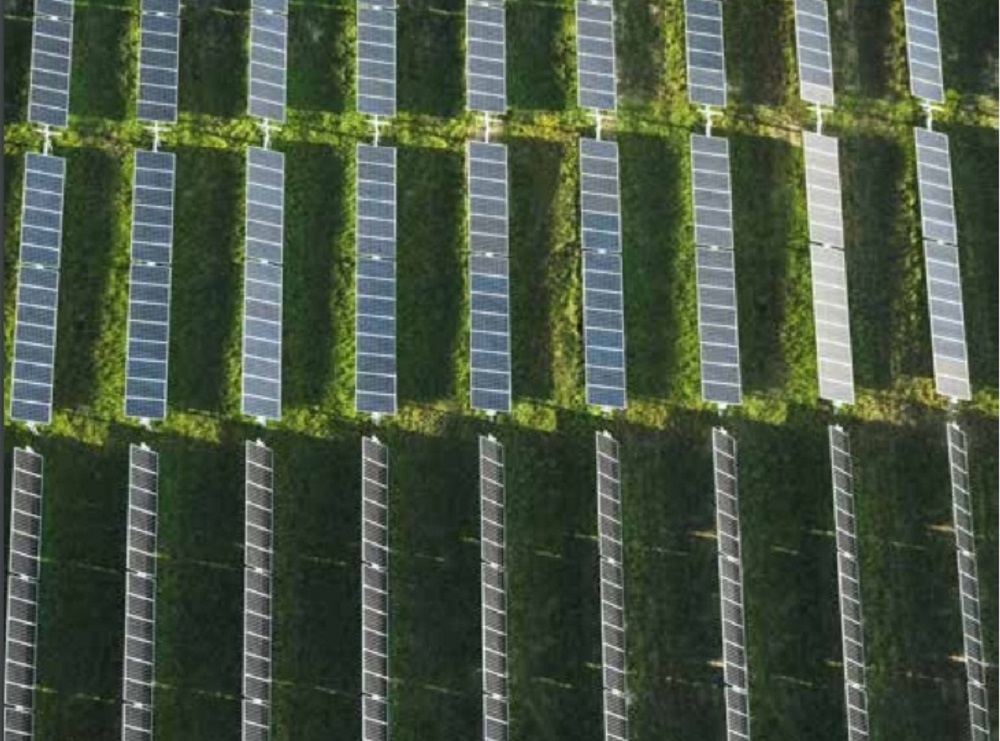From pv magazine USA
Nextracker LLC, a specialist in smart solar trackers, has published a white paper based on third-party analysis showing how Nextracker’s machine-learning software improves utility-scale solar power plant performance. In a series of tests conducted at operational sites in three states, it was found that TrueCapture increased annual energy production by hundreds of thousands of megawatt hours per year.
“TrueCapture gains are predictable and bankable, providing asset owners with gigawatt-hours of additional production and millions of dollars in additional revenue,” said Dan Shugar, founder and CEO of Nextracker. “Our trackers come with embedded communication and control capabilities, so we can provide our TrueCapture and NX Navigator control software both to our customers’ existing installed fleet as well as their new projects. Split-boost, added last year further enhanced TrueCapture performance.”
What sets Nextracker’s decentralised architecture apart from linked-row tracker designs is how it allows for highly granular row-level control and optimisation. Each row in a Nextracker system is powered by its own solar module, battery, actuator and controller, so intelligent independent-row operation is possible. Furthermore, at the control level, the network components required to monitor, command and optimise each single-axis tracker row are all located on the project site. Nextracker’s hardware is wirelessly controlled by the NX Data Hub, a Linux-based industrial computer. And because it is locally powered and controlled, both hardware and software are secure from AC power outages and loss of external communications. The way the tracker works is that TrueCapture adjusts the position of each individual Nextracker row by dispatching real-time tracking parameters in response to site-specific conditions. Informed by sensor data and machine learning technologies, this enables TrueCapture to precisely orient tracker rows to account for terrain variance, construction tolerance, cell technology and weather patterns.
Three case studies
The paper reviewed longitudinal data across three operating projects in California, Georgia and New Mexico, whose output averages over 2% in production benefit. At these sites, the performance of TrueCapture-equipped trackers was tested against a set of control blocks using standard backtracking.
The 40 MWac California site, which is in the Mojave Desert, is one of five power stations that make up the larger 250 MWac Beacon Solar Project portfolio. Commissioned in 2017, the Beacon 5 solar power station integrates full-cell crystalline silicon PV modules and Nextracker’s flagship NX Horizon single-axis trackers. The site has a ground coverage ratio of 50.5% and an average diffuse irradiance percentage of 26.4%. Beacon 5 has significant shading while operating with standard backtracking algorithms. To mitigate the impacts of terrain shading, Nextracker proposed implementing TrueCapture’s yield-enhancing algorithms. Independent performance engineers at Black & Veatch validated TrueCapture’s performance gains, noting in its follow-up engineering report, a 2.2% increase in energy yield for the TrueCapture group relative to the control group.
The 120 MWac New Mexico installation is located on 840 acres. Called the Bluemex solar project, it integrates full-cell crystalline silicon PV modules on NX Horizon single-axis trackers. Unlike the California site, the New Mexico site is relatively flat, however, it experiences extreme moisture on a seasonal basis. Nextracker estimated that the site would see a boost of 0.64% by implementing TrueCapture, with gains of 0.3% coming from Nextracker’s Diffuse Boost and 0.34% from Shade Avoid. At the end of the test period, performance engineers found that the Diffuse Boost module provided measured gains of 0.31% and the Shade Avoid mode resulted in an average gain of 0.32% for the test blocks that best matched the site’s average slope number. Overall, TrueCapture provided measured gains of 0.63%.
The 102.5 MWac site in southwest Georgia, called Bancroft Station, supplies 100% renewable energy to Facebook’s Newton Data Center. This dual-use site co-locates solar generation with regenerative agricultural practices, therefore Silicon Ranch did minimal grading to minimize negative impacts to the topsoil. In addition to using TrueCapture controlled single-axis trackers, the Bancroft Station site integrates half-cell crystalline silicon PV modules that Silicon Ranch sourced locally from a Hanwha Q Cells factory in Belton, Georgia. In a Split Boost test conducted in June 2021, performance engineers calculated that half-cell optimization algorithm improved performance by 1.7% relative to standard backtracking on a median sloped test block over a 12-month period.
By reviewing empirical gains for three real-world projects, independent engineers validated TrueCapture’s project yield enhancements and have accounted for these gains as part of a bankable independent energy yield assessment.
More details on the tests are available in the white paper, Enhancing Energy Yields with TrueCapture Using Nextracker’s Proven Intelligent Control Capabilities to Optimize Solar Project Financing and Plant Performance.
This content is protected by copyright and may not be reused. If you want to cooperate with us and would like to reuse some of our content, please contact: editors@pv-magazine.com.









By submitting this form you agree to pv magazine using your data for the purposes of publishing your comment.
Your personal data will only be disclosed or otherwise transmitted to third parties for the purposes of spam filtering or if this is necessary for technical maintenance of the website. Any other transfer to third parties will not take place unless this is justified on the basis of applicable data protection regulations or if pv magazine is legally obliged to do so.
You may revoke this consent at any time with effect for the future, in which case your personal data will be deleted immediately. Otherwise, your data will be deleted if pv magazine has processed your request or the purpose of data storage is fulfilled.
Further information on data privacy can be found in our Data Protection Policy.